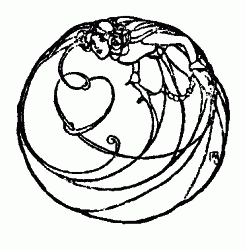
THE SCOTTISH FAIRY BOOK
BY
ELIZABETH W. GRIERSON
WITH ILLUSTRATIONS
BY
MORRIS MEREDITH WILLIAMS

J. B. LIPPINCOTT COMPANY
PHILADELPHIANEW YORK
Printed in U.S.A.
"Of Brownys and of Bogillis Full this Buke."
—GAVIN DOUGLAS
PREFACE
There are, roughly speaking, two distinct types of Scottish Fairy Tales.
There are what may be called "Celtic Stories," which were handed downfor centuries by word of mouth by professional story-tellers, who wentabout from clachan to clachan in the "Highlands and Islands," earning anight's shelter by giving a night's entertainment, and which have nowbeen collected and classified for us by Campbell of Isla and others.
These stories, which are also common to the North of Ireland, are wildand fantastic, and very often somewhat monotonous, and their themes arestrangely alike. They almost always tell of some hero or heroine whosets out on some dangerous quest, and who is met by giants, generallythree in number, who appear one after the other; with whom they holdquaint dialogues, and whom eventually they slay. Most of them are fairlylong, and although they have a peculiar fascination of their own, theyare quite distinct from the ordinary Fairy Tale.
These latter, in Scotland, have also a character of their own, for thereis no country where the existence of Spirits and Goblins has been soimplicitly believed in up to a comparatively recent date.
As a proof of this we can go to Hogg's tale of "The Wool-gatherer," andsee how the countryman, Barnaby, voices the belief of his day. "Ye hadneed to tak care how ye dispute the existence of fairies, brownies, andapparitions! Ye may as weel dispute the Gospel of Saint Matthew."
Perhaps it was the bleak and stern character of their climate, and theausterity of their religious beliefs which made our Scottish forefathersthink of the spirits in whom they so firmly believed, as being, for themost part, mischievous and malevolent.
Their Bogies, their Witches, their Kelpies, even their Fairy Queenherself, were supposed to be in league with the Evil One, and to becompelled, as Thomas of Ercildoune was near finding out to his cost, topay a "Tiend to Hell" every seven years; so it was not to be wonderedat, that these uncanny beings were dreaded and feared.
But along with this dark and gloomy view, we find touches of delicateplayfulness and brightness. The Fairy Queen might be in league withSatan, but her subjects were not all bound by the same law, and manycharming tales are told of the "sith" or silent folk, who were alwaysspoken of with respect, in case they might be within earshot, who madetheir dwellings under some rocky knowe, and who came out and danced onthe dewy sward at midnight.
Akin to them are the tales which are told about a mysterious regionunder the sea, "far below the abode of fishes," where a strange race ofbeings lived, who, in their own land closely resembled human beings, andwere of such surpassing beauty that they charmed the hearts of all wholooked on them. They were spoken of as Mermaids and ...